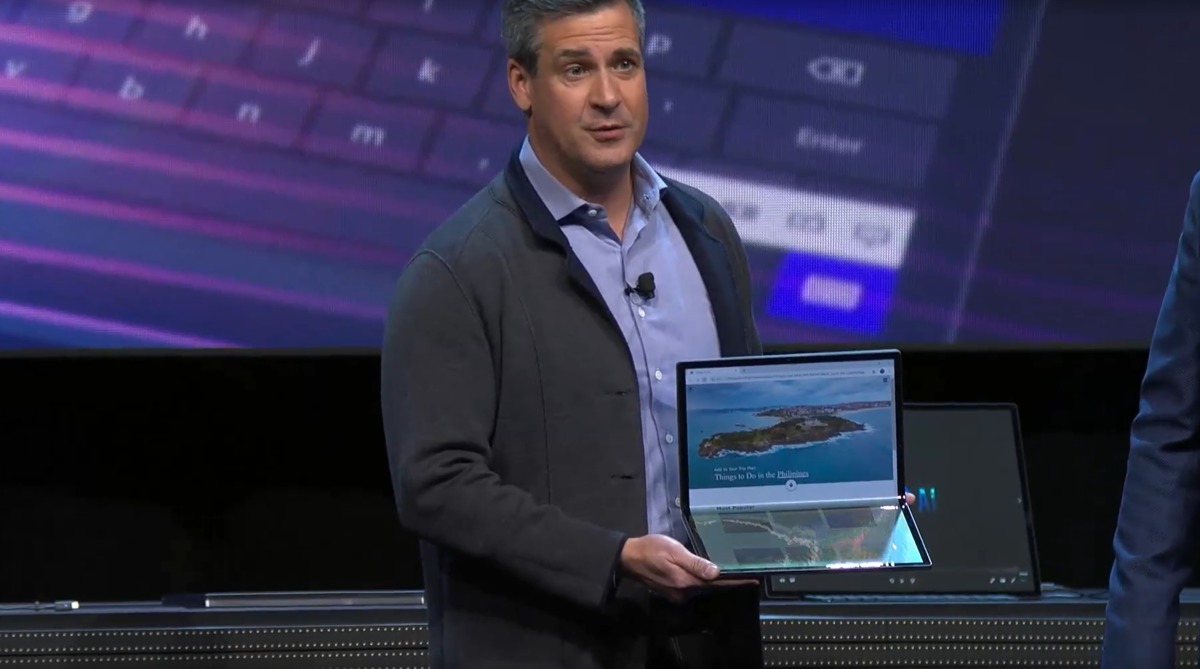Intel used CES in Las Vegas to offer a further glimpse, though little detail, of its next-generation chips due in 2020: Tiger Lake, its next CPU, and proof that its next GPU, code-named DG1, is up and running.
Before its press conference Monday even began, Intel had already made several announcements, some arguably more interesting: its new Core i9-based modular NUC, “Ghost Canyon,” plus new details concerning its 10th-gen Comet Lake chips, including the fact that they’ll run above 5GHz. Intel also revealed earlier that its upcoming Tiger Lake CPUs will have improved AI performance, though the company didn’t say how much.
Intel is—or should be—worried about AMD’s barrage of CES announcements, including the Ryzen 4000 7nm/Zen 2 mobile chips expected to take on Intel, and the ridiculously powerful 64-core 3rd-gen Ryzen Threadripper 3990WX.
Project Athena gains momentum
The press conference began with segments on Intel’s enterprise businesses, which we’ve summarized at the end of this story. Finally it was time for some consumer PC news.
Greg Bryant, executive vice president of its Client Computing Group, came onstage to update the audience on Project Athena, the thin-and-light specification that Intel helped develop. In less than a year, Intel has verified 25 Project Athena devices, Bryant said. In 2020, that number will be doubled to more than 50, Bryant continued—including a new dual-screen specification.
 Intel
IntelThe Samsung Galaxy Chromebook is part of Intel’s Project Athena program, partnering with Google. Intel showed off the new model at CES in Las Vegas.
Intel representatives showed off two Project Athena laptops: the Acer Swift 3 and the HP Elite Dragonfly. Bryant also highlighted the Project Athena partnership with Google for Chromebooks, including the Asus Chromebook Flip C434 and Samsung Galaxy Chromebook announced at CES.
Lenovo’s Christian Teismann, senior vice president for the commerical business at Lenovo, came onstage to show off the ThinkPad X1 Fold, a dual-screen PC that can be a 13.3-inch display or tablet, or a small laptop. Intel followed that with a demo of the Dell Concept Duet, a larger dual-screen laptop prototype.
Intel’s Chris Walker made a surprise entrance with another concept: “Horseshoe Bend,” a full 17-inch foldable PC. Like the Lenovo ThinkPad X1 Fold, Horseshoe Bend can be a single-screen display or tablet, or a dual-screen device, and it’s a lot bigger than Lenovo’s offering.
 Intel / YouTube
Intel / YouTubeIntel’s Chris Walker shows “Horseshoe Bend,” the company’s prototype of a 17-inch foldable PC.
Bryant also pledged 5G support for PCs, with a partnership with Mediatek, with samples available in the third quarter of 2020. Originally, Intel had claimed that the partnership wouldn’t yield fruit until 2021.
Tiger Lake and DG1
Bryant then switched gears to the silicon inside the devices themselves, with an emphasis on AI. Adobe’s Jason Levine appeared briefly…
https://www.pcworld.com/article/3512619/intel-confirms-tiger-lake-is-the-next-intel-core-processor-you-need-to-care-about.html#tk.rss_all
